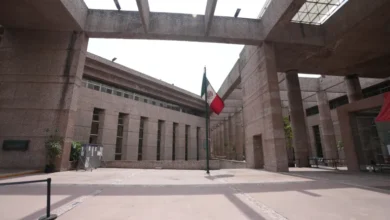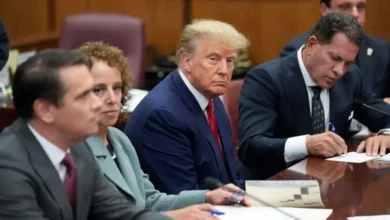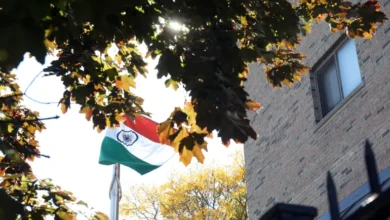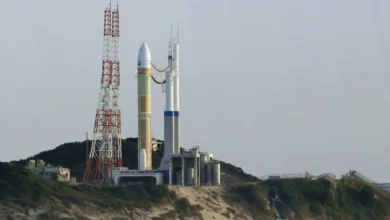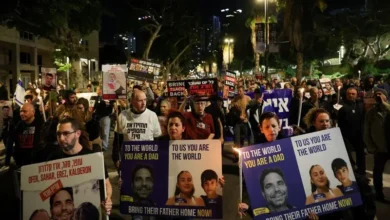Load shedding & water woes: Can South Africa fix its ailing infrastructure?

“I set up my company several years ago. The power cuts were bad then, lasting up to five hours a day,” said Lezanne Viviers, who works in the fashion industry and lives in Johannesburg, South Africa’s biggest city.
Since 2007, electricity cuts have become so common that Eskom – the state-owned electricity supplier – has devised a schedule for them. It calls these periods of national exasperation “load shedding”.
“We weren’t ready for it. But us South Africans are very resilient,” Viviers told Al Jazeera. “When there was load shedding, we worked with our hands and made use of the sunshine. I also bought a back-up engine. That was useful, as some power outages last year persisted all-day.”
More recently the country has experienced uninterpreted power for 57 days – the longest consecutive period in over two years – drawing allegations of electioneering ahead of next week’s general ballot.
Still, many companies have bought back-up diesel generators or solar panels, often at the expense of other investments and hiring. For small or informal businesses that cannot afford secondary supplies, working around the blackouts – or not working at all – is unavoidable.
In 2023, power outages mothballed factories, offices and shops to the tune of 926 million South African rand ($51m) a day, according to the country’s Reserve Bank.
“I installed a solar panel a few years ago to avoid dealing with electricity failures altogether,” Viviers added. “I know the next government faces numerous challenges. But making sure the lights work for most people seems like a good place to start.”
Power woes are not the only challenge confronting the country of 62 million. Decades of low-maintenance and a lack of investment have led to crumbling transport networks and water supplies.
The ruling African National Congress (ANC), which has been in power since the end of apartheid in 1994, is in danger of losing its parliamentary majority on the back of decrepit infrastructure – a key voting issue.
In a BrandMapp-Silverstone online survey (PDF) conducted last year, two-thirds of middle-income respondents said they would consider rejecting the governing party due to years of power failures.
Trouble at Eskom
For decades, Eskom’s ageing coal-powered plants have been poorly maintained and undermined by theft, especially of coal and copper. Elsewhere, accusations of corruption abound.
Once hailed as a first-rate utility company, it has become a byword for dysfunction. In 1990, Eskom was self-financing and provided some of the world’s cheapest electricity, albeit to the minority white South Africans and businesses.
After apartheid, the drive to extend electricity to all South Africans – particularly in the country’s growing townships – was not matched by investment in new power stations. At the same time, rising international coal prices, Eskom’s principal cost, squeezed returns.
Then from 2009 to 2018, under President Jacob Zuma, Eskom would be at the heart of what became known as “state capture” – in which individuals and companies commandeered the state to redirect public resources into private hands, and gutting those institutions in the process.
Last February, President Cyril Ramaphosa was forced to declare a state of disaster as blackouts lasted up to 12 hours per day. The government provided $14bn of debt relief to Eskom to free up money for plant maintenance and network improvements.
But South Africa’s National Treasury conditioned the bailout on unpopular tariff increases. Eskom was also split into separate units – namely generation, transmission and distribution. Unbundling, it was claimed, would make Eskom easier to manage.
At the same time, licensing requirements on green power stations were scrapped. Since then, private investment in wind farms and nuclear plants has increased. “We’re slowly unwinding Eskom’s near-monopoly on power,” said Azar Jammine, chief economist at consultancy Econometrix.
The private sector now generates 10.4 gigawatts of electricity, close to half of Eskom’s functioning capacity. Looking ahead, Jammine thinks that will continue to rise.
“Private companies can produce up to 100 megawatts of power… a few years ago it was just 1,” he said. “Large users of electricity are increasingly able to bypass Eskom by producing their own power. Households are doing the same with solar panels.”
“That partly explains the lack of load-shedding recently,” Jammine told Al Jazeera. “It’s a sign that energy policy is headed in the right direction. The country is moving away from its reliance on Eskom and coal, and the private sector will continue playing a big role in that.”
He added that “energy policy is headed in the right direction under the ANC”.
“In all honesty, I’m more worried about my taps than my lights.”


